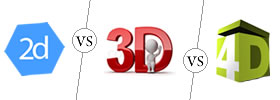

We observe consistently lower but proportional sensitivity to exchange fraction among 4d TMCs with respect to their isovalent 3d TMC counterparts, leading to the largest difference in sensitivities for the strongest field ligands. We analyze hundreds of complexes assembled from four metals in two oxidation states with ten small monodentate ligands that span a wide range of field strengths expected to favor a variety of ground states. We compare the exchange sensitivity of adiabatic spin-splitting energies in pairs of mononuclear 3d and 4d mid-row octahedral transition-metal complexes. Increasing the amount of exchange in a functional typically shifts the preferred ground state in first-row TMCs from low-spin to high-spin by penalizing delocalization error, but the effect on properties of second-row complexes is less well known. 71.Density functional theory (DFT) is widely used in transition-metal chemistry, yet essential properties such as spin-state energetics in transition-metal complexes (TMCs) are well known to be sensitive to the choice of the exchange–correlation functional.

For more information, contact Mike Williams at This email address is being protected from spambots.
3d vs 4d shape chemistry tv#
Watch the process in action on Tech Briefs TV here. Gaining that ability will allow researchers to print far more complex combinations of shapes.įuture work will further optimize the printing formula and use scaffold-assisted printing techniques to create actuators that transition between two different complex shapes, opening the door to printing soft robotics that could swim like a jellyfish, jump like a cricket, or transport liquids. To do so would require a solution that gels just enough to support itself during printing. One remaining limitation of the process is the ability to print unsupported structures, like columns. Parameters such as the solvents and catalyst used, degree of swelling, and ink formula had to be optimized to allow the ink to solidify rapidly enough to print while not inhibiting the desired final shape actuation. The researchers had to find a polymer mix that could be printed in a catalyst bath and still hold its original programmed shape. Once the two programmed forms are set, the material can then morph back and forth when, for instance, it’s heated or cooled. Curing the alternate form under ultraviolet light locks in those links. One establishes the original printed shape and the other can be set by physically manipulating the printed and dried material. The lab’s challenge was to create a liquid crystal polymer “ink” that incorporates mutually exclusive sets of chemical links between molecules. Rather than trying to do this all in one step, the approach gives more flexibility in controlling the initial and final shapes and also allows printing of complex structures. The new method uses multiple reactions in sequence to print the material and then dictate how it would change shape. These materials, once fabricated, will change shape autonomously, so the team needed a method to control and define this shape change. Overcoming that limitation to decouple the printing process from shaping is a significant step toward more useful materials. That meant no bumps or other complex curvatures could be programmed as the alternate shape. But using the same chemistry for 3D printing limited structures to shapes that sat in the same plane. The researchers first reported their ability to make morphing structures in a mold in 2018. Researchers have developed a method to print objects that can be manipulated to take on alternate forms when exposed to changes in temperature, electric current, or stress. Soft robots and biomedical implants that reconfigure themselves upon demand are closer to reality with a new way to print shapeshifting materials.


 0 kommentar(er)
0 kommentar(er)
